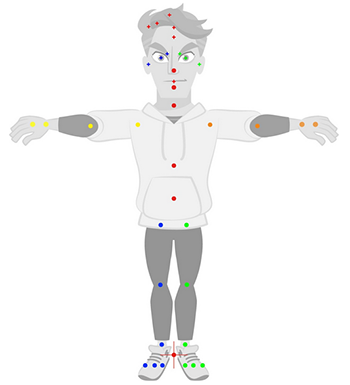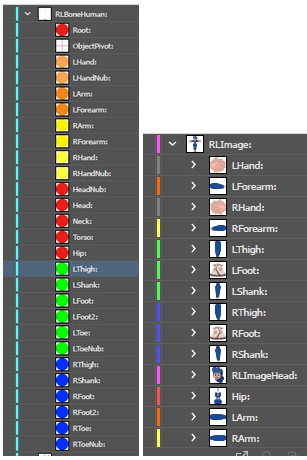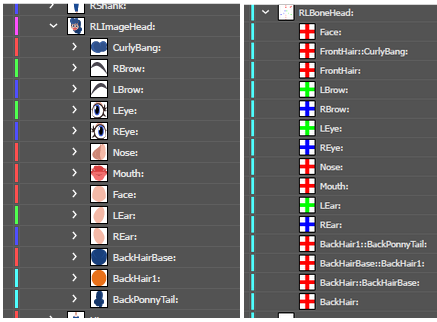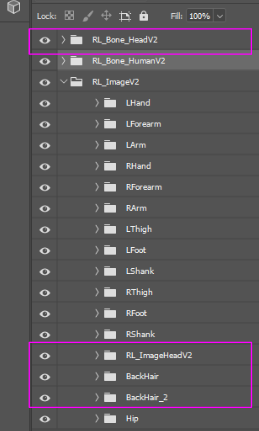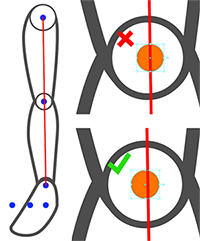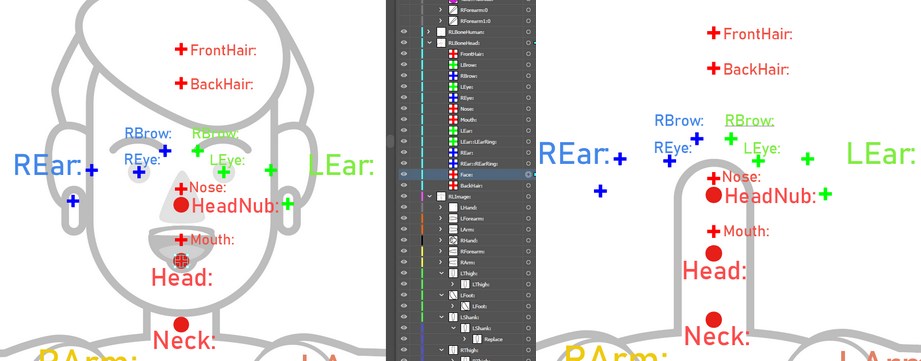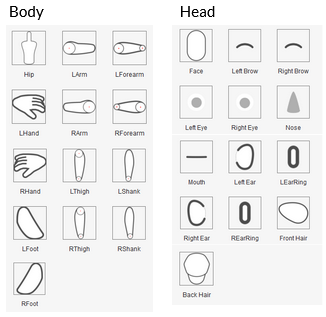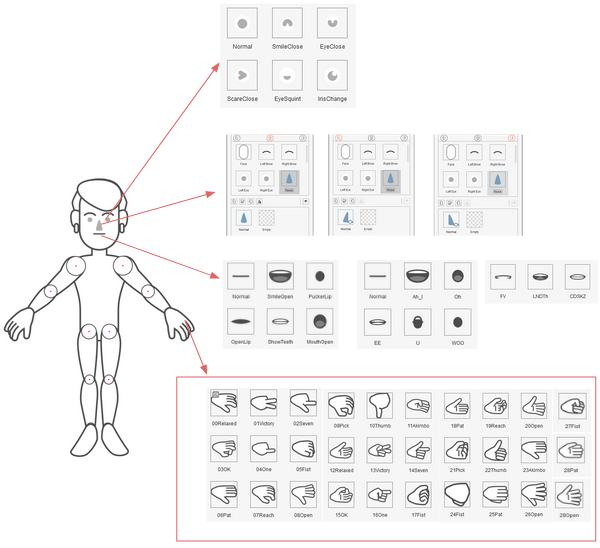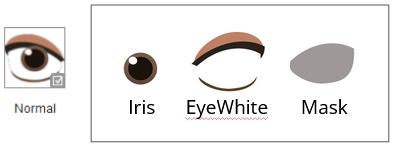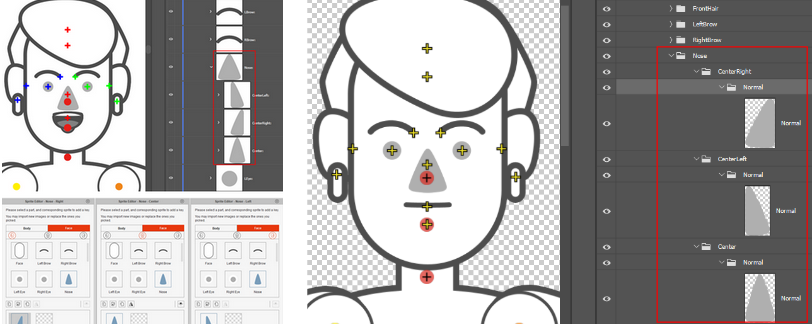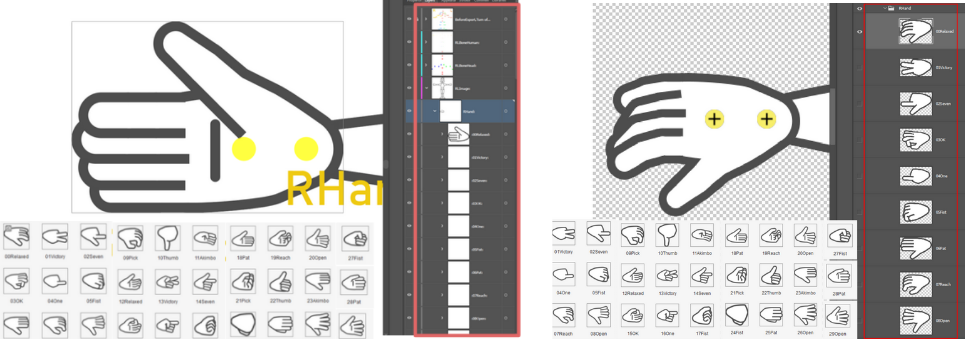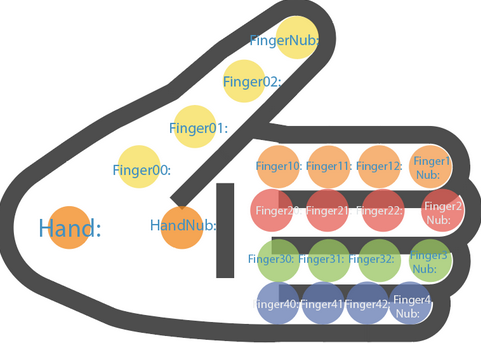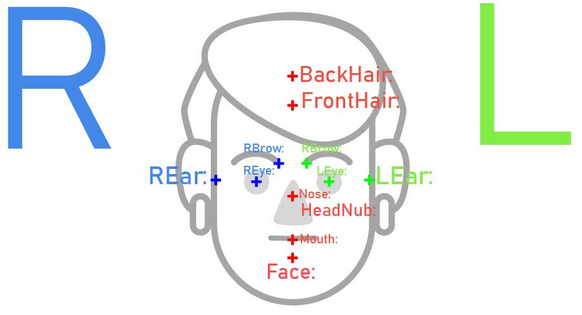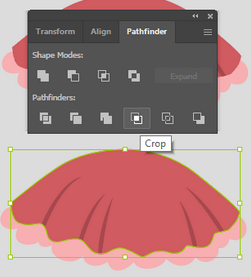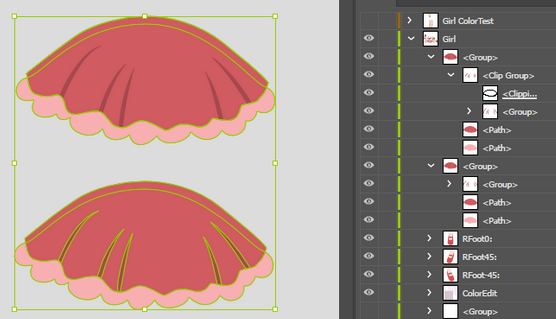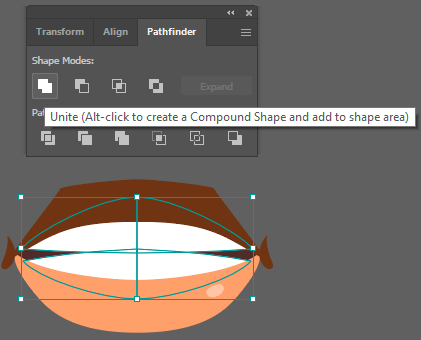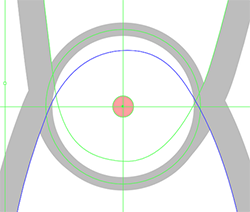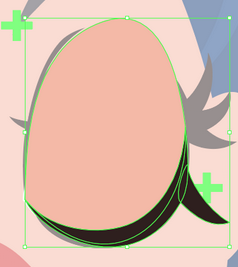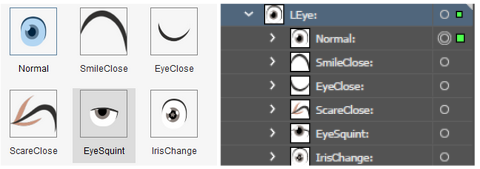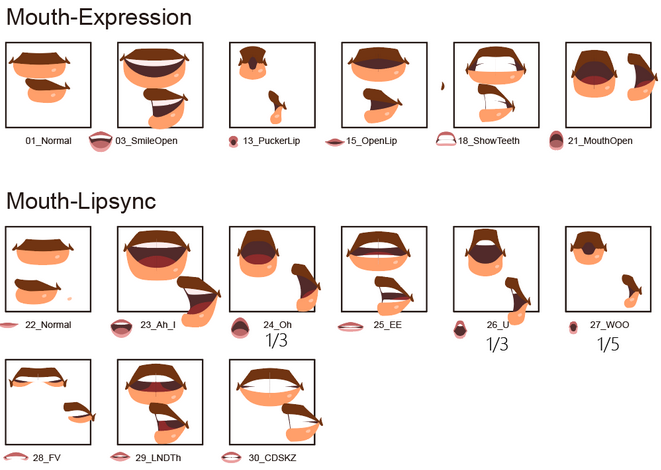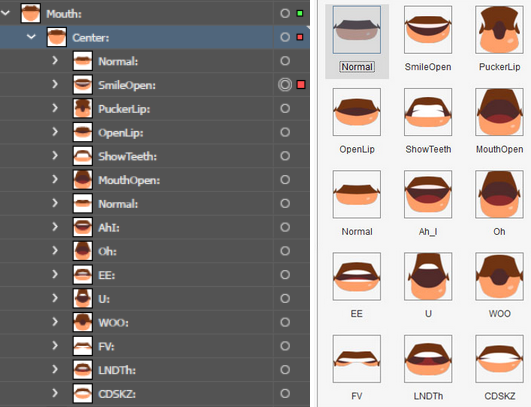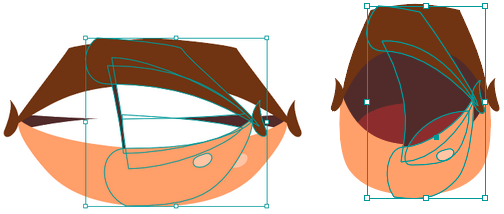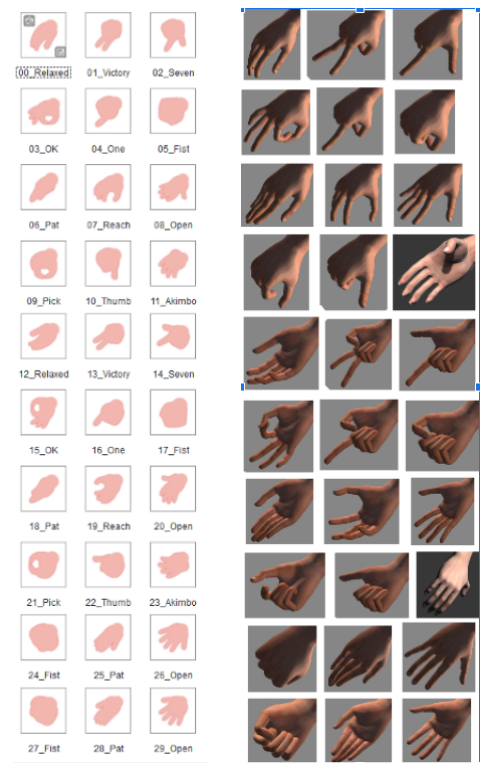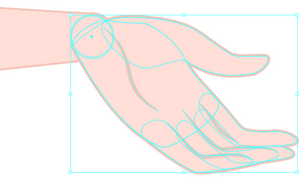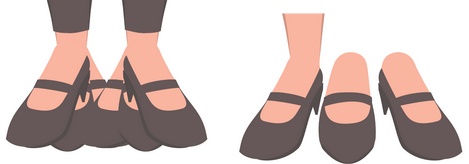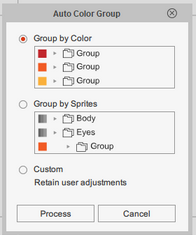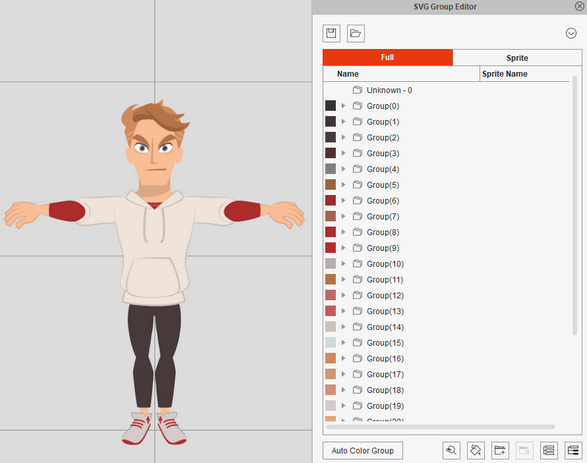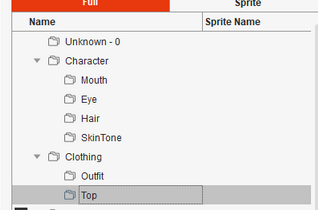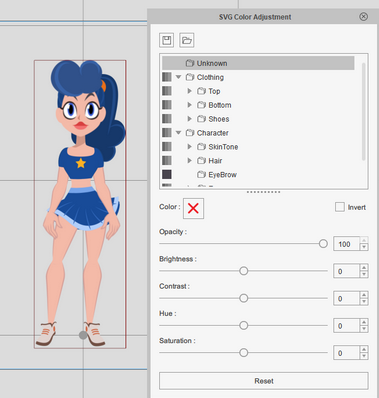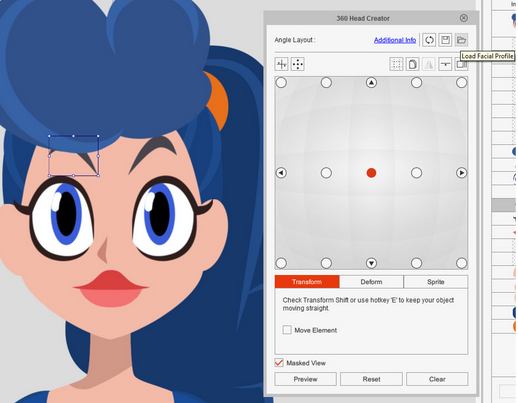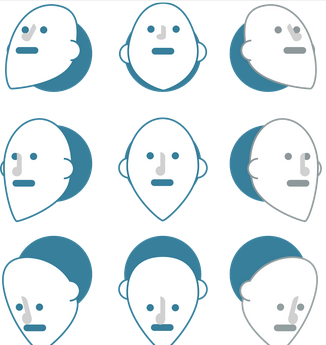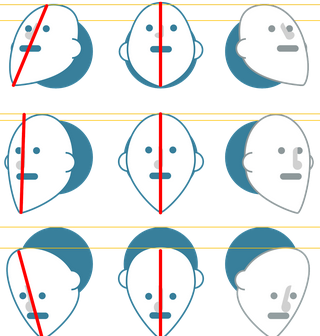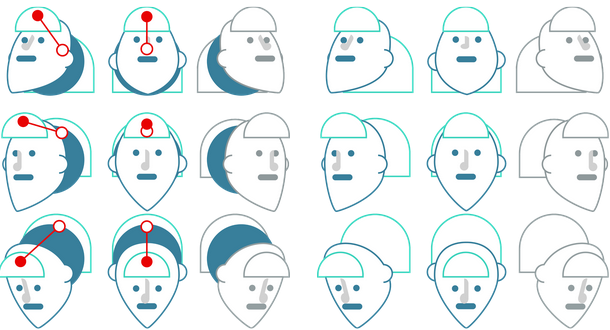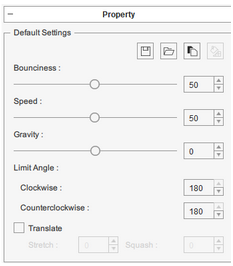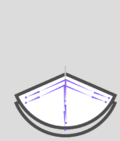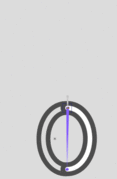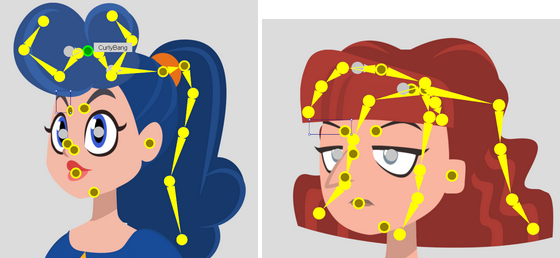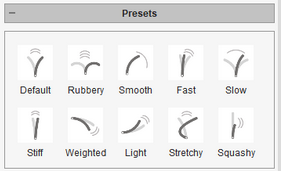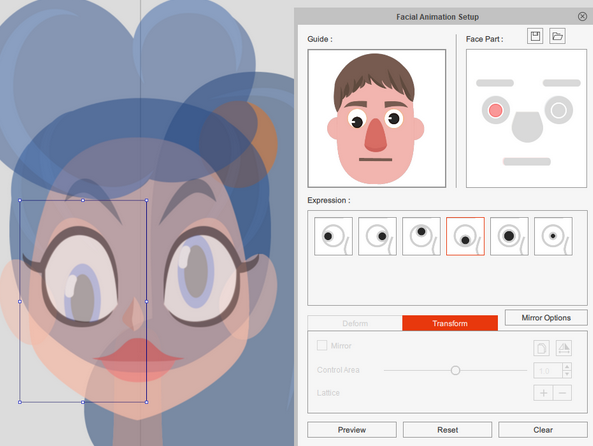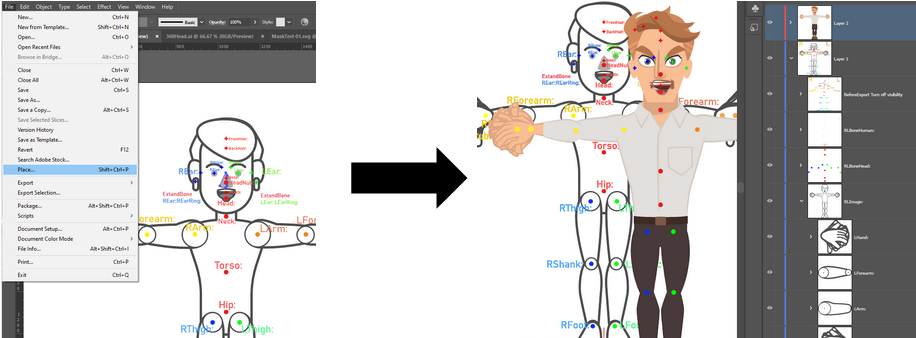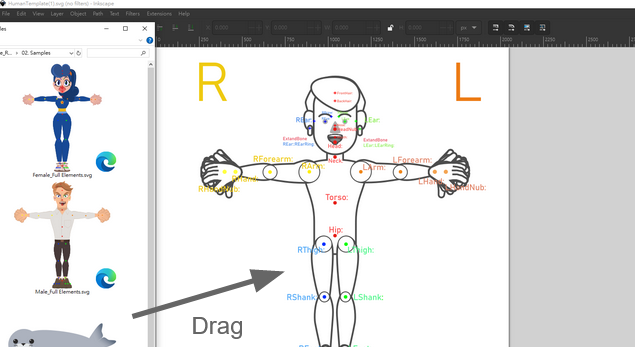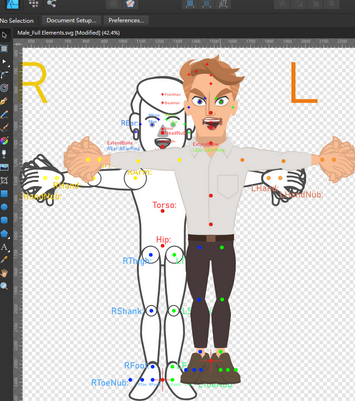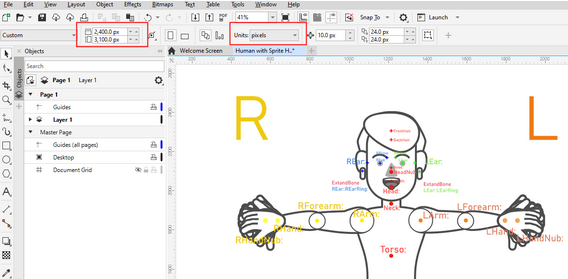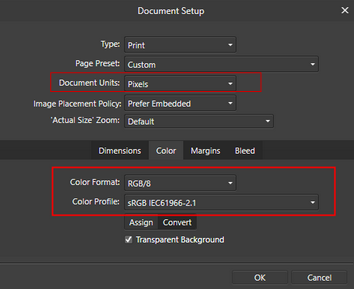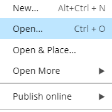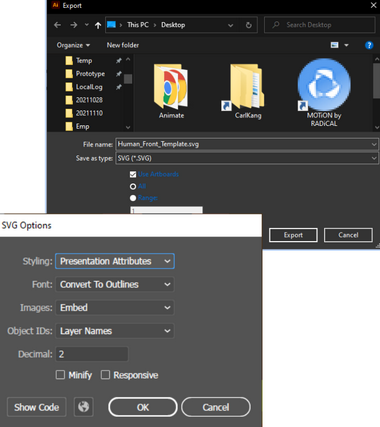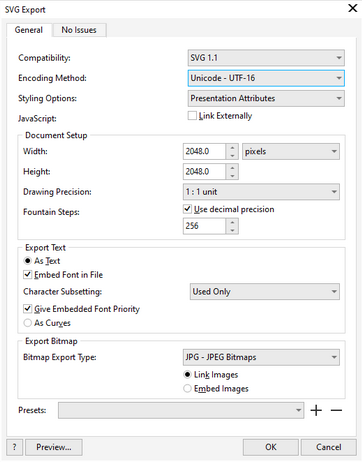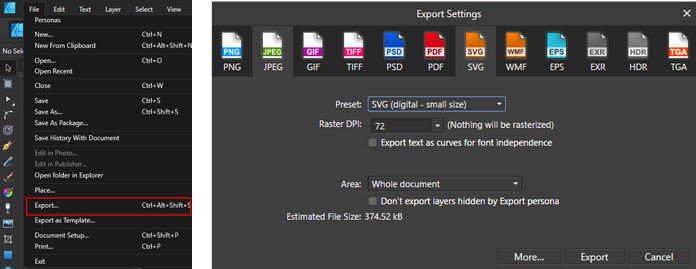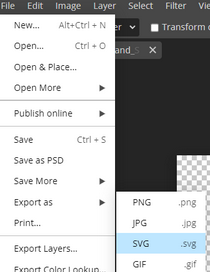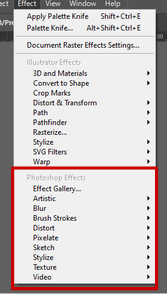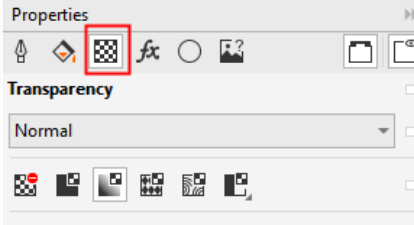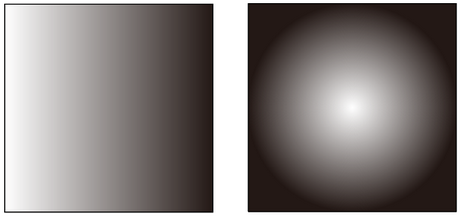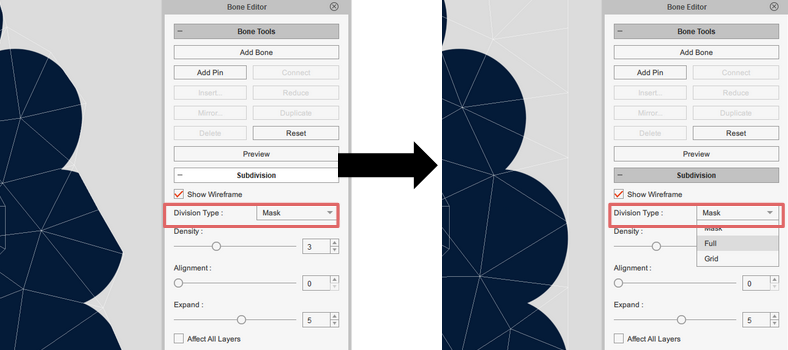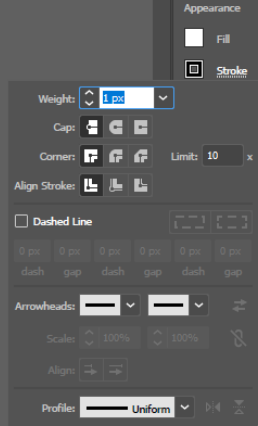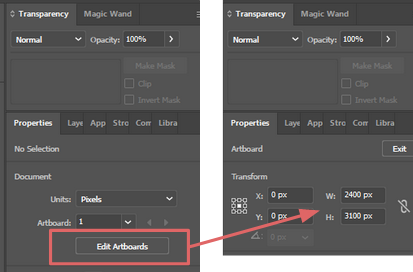Difference between revisions of "Content Dev:CTA5 G3 SVG Character Creation"
Chuck (RL) (Talk | contribs) m (→Troubleshooting) |
Chuck (RL) (Talk | contribs) m |
||
| (10 intermediate revisions by the same user not shown) | |||
| Line 3: | Line 3: | ||
{{Parent|Content_Dev:CTA_Actor|Content Dev: CTA Actor}} | {{Parent|Content_Dev:CTA_Actor|Content Dev: CTA Actor}} | ||
| − | == | + | == Introduction to the character production process == |
During the process of developing Cartoon Animator 3 (CTA3) and designing content packs, it came to light that many supplementary materials were not integrated into the character production process; CTA5's new SVG character production gave the perfect chance to compensate for this deficiency; And finally, the content production process and relevant reference materials can be united to bring this article into fruition. After the overall shape of your 2D character is confirmed, you can proceed with the following steps to convert it into embedded content: | During the process of developing Cartoon Animator 3 (CTA3) and designing content packs, it came to light that many supplementary materials were not integrated into the character production process; CTA5's new SVG character production gave the perfect chance to compensate for this deficiency; And finally, the content production process and relevant reference materials can be united to bring this article into fruition. After the overall shape of your 2D character is confirmed, you can proceed with the following steps to convert it into embedded content: | ||
| Line 20: | Line 20: | ||
While drawing your character, it is prudent to consider the ''dynamism'' of its performance, such as the bend to the limbs as well as the method of altering the facial features and their appearance at different angles. When all of these elements are carefully considered, the chances of encountering inadequate dynamism in performance after the character has been assembled can be reduced; and thereby numerous trips of error corrections between Illustrator and CTA can be avoided. Since the character graphics and structures are related to each other, settings for color groups, head turns, and puppeteering starts at the structural level which is also in lockstep with the production procedure. | While drawing your character, it is prudent to consider the ''dynamism'' of its performance, such as the bend to the limbs as well as the method of altering the facial features and their appearance at different angles. When all of these elements are carefully considered, the chances of encountering inadequate dynamism in performance after the character has been assembled can be reduced; and thereby numerous trips of error corrections between Illustrator and CTA can be avoided. Since the character graphics and structures are related to each other, settings for color groups, head turns, and puppeteering starts at the structural level which is also in lockstep with the production procedure. | ||
| − | == The character structure == | + | === The character structure === |
[[File:cta5_g3_svg_character_creation_01.PNG|frame|left|Composition of the body and facial bones accompanied by structural graphics.]] | [[File:cta5_g3_svg_character_creation_01.PNG|frame|left|Composition of the body and facial bones accompanied by structural graphics.]] | ||
| Line 59: | Line 59: | ||
{{clear}} | {{clear}} | ||
| − | === Guide to the drawing process | + | === BoneHuman === |
| + | |||
| + | [[File:cta5_g3_svg_character_creation_21.png|frame|On pivot (top) and slightly off axis (bottom).]] | ||
| + | |||
| + | The character's body part bones can be repositioned to fit the style and proportions of your character. You can create a template from scratch and any ommissions on your part can be supplemented by referring to the part types and names in the following illustration. The leg bones and knees need to be slightly bent outward. Do not align the thigh and foot in a straight line, instead, offset the knee slightly to coax the leg to bend toward the right direction (especially when it squats). | ||
| + | |||
| + | [[File:cta5_g3_svg_character_creation_20.png]] | ||
| + | |||
| + | The assembly of the face will coincide with the head creation. The neck should extend to the "HeadNub" which should be located around the center of the nose. This is so the neck has enough length to bend elastically as the head tilts. | ||
| + | |||
| + | [[File:cta5_g3_svg_character_creation_22.png]] | ||
| + | |||
| + | === Template Introduction === | ||
| + | |||
| + | CTA5 provides the vector character for import into CTA for the creation process. This section will describe the process of taking the provided template into Illustrator for the SVG character creation step. | ||
| + | |||
| + | [[File:cta5_g3_svg_character_creation_template_intro_01.PNG|frame|left|SVG template workflow on the left and the raster process on the right.]] | ||
| + | |||
| + | {{clear}} | ||
| + | |||
| + | The character is composed of several images. The way the images are separated do not follow a consistent pattern. You'll need to inspect the character's template file to verify it's structure. | ||
| + | |||
| + | [[File:cta5_g3_svg_character_creation_template_intro_02.PNG]] | ||
| + | |||
| + | For every part there's a bone that controls several images. | ||
| + | |||
| + | *Eyes: 6 images | ||
| + | *Mouth: 15 images | ||
| + | *Hand: 30 images | ||
| + | *Multi-angled nose: 3 images | ||
| + | |||
| + | For parts with a range of images, it's important to verify with the template file. | ||
| + | |||
| + | [[File:cta5_g3_svg_character_creation_template_intro_03.PNG]] | ||
| + | |||
| + | Besides the aforementioned fixed structures, there are some variable structures that which can occur with hair. The template does not contain correlated skeleton for this type; so you need to make one that fits your needs. | ||
| + | |||
| + | *Images that make up the hair vary depending on the target hairstyle. | ||
| + | *You'll need to check the template file to verify the structure. | ||
| + | |||
| + | [[File:cta5_g3_svg_character_creation_template_intro_04.PNG]] | ||
| + | |||
| + | The eyes are composed of the special "Iris", "EyeWhite", and "Mask" layers. You'll need to place these elements according to the template. | ||
| + | |||
| + | [[File:cta5_g3_svg_character_creation_template_intro_05.PNG]] | ||
| + | |||
| + | The head images for the G3 360 series character can vary. You'll need to verify with the template file. | ||
| + | |||
| + | *Faces are not limited to one image (see the illustration to the right). | ||
| + | *Noses will have multiple images for different angles (see the illustration to the right). | ||
| + | |||
| + | [[File:cta5_g3_svg_character_creation_template_intro_06.PNG|frame|left|SVG template on the left and raster version on the right.]] | ||
| + | |||
| + | {{clear}} | ||
| + | |||
| + | This file includes a human with '''Spritehand'''. '''Spritehand''' is parented to '''RLImage''' palm element. There are a total of 20 types of hand elements under both hands. | ||
| + | |||
| + | [[File:cta5_g3_svg_character_creation_template_intro_07.PNG|frame|left|SVG sprite hand on the left and raster version on the right.]] | ||
| + | |||
| + | {{clear}} | ||
| + | |||
| + | This file also includes a human with '''BoneHand'''. '''Bonehand''' is parented to '''RLImage''' palm element. Every single joint in the fingers can be controlled. Naming of joints for both hands can be the same and does not have an adverse effect when imported into CTA. | ||
| + | |||
| + | [[File:cta5_g3_svg_character_creation_template_intro_08.PNG]] | ||
| + | |||
| + | === BoneHead === | ||
| + | |||
| + | [[File:cta5_g3_svg_character_creation_23.png|frame]] | ||
| + | |||
| + | The basic bone positions of the head are the following: | ||
| + | |||
| + | *'''Eyes''' for the center of the pupils. | ||
| + | *'''Eyebrows''' for the eyebrows to the sides of the nose. | ||
| + | *'''Nose''' is usually positioned on the tip or center of the nose. | ||
| + | *'''Mouth''' should be placed at the center of the neutral lip shape. | ||
| + | *'''Ears''' are placed at the sides of his head near the midline of the face. | ||
| + | *'''Face''' position is roughly the same as the head around the position of the character's chin. | ||
| + | *'''BackHair/FrontHair''' is treated the same as the CTA4 Head Tool. | ||
| + | **If the two bones of the character are shifted arbitrarily, it will cause the hairstyle to be offset from one another. | ||
| + | **It is recommended to directly copy the position of the '''TemplateBone''' or change out the graphics in the template. | ||
| + | **Do not move or change the order of the layers. | ||
| + | |||
| + | Put the basic scalp hair under '''FrontHair''' and all hairs behind it under '''Backhair'''. Once these two items are fixed, draw out the hair cards. Adjust the skin colors according to the color tones of the scalp or head type. The current unified rules are the following: | ||
| + | |||
| + | *'''FrontHair''' on the top and '''BackHair''' on the bottom. | ||
| + | *The '''FrontHair''' is positioned close to the hairline. | ||
| + | *'''FrontHair''' and '''Backhair''' usually lies closesly apart. | ||
| + | *Bone points for hair cards need to be placed at the roots for them to move naturally with Spring dynamics. | ||
| + | |||
| + | == Guide to the drawing process == | ||
[[File:cta5_g3_svg_character_creation_04.PNG|frame|left]] | [[File:cta5_g3_svg_character_creation_04.PNG|frame|left]] | ||
| Line 82: | Line 171: | ||
{{clear}} | {{clear}} | ||
| − | + | === Merging compound shapes === | |
[[File:cta5_g3_svg_character_creation_06.PNG]] | [[File:cta5_g3_svg_character_creation_06.PNG]] | ||
| Line 92: | Line 181: | ||
{{clear}} | {{clear}} | ||
| − | + | === Joint positioning === | |
[[File:cta5_g3_svg_character_creation_08.PNG|frame|left]] | [[File:cta5_g3_svg_character_creation_08.PNG|frame|left]] | ||
| Line 100: | Line 189: | ||
{{clear}} | {{clear}} | ||
| − | + | === Drawing eyes === | |
[[File:cta5_g3_svg_character_creation_10.PNG|frame|To swap images in the '''Color Group''' such as eyelashes or wrinkles, you'll need to glue additional shapes to the base graphics.]] | [[File:cta5_g3_svg_character_creation_10.PNG|frame|To swap images in the '''Color Group''' such as eyelashes or wrinkles, you'll need to glue additional shapes to the base graphics.]] | ||
| Line 123: | Line 212: | ||
{{clear}} | {{clear}} | ||
| − | + | === Positioning mouth shapes === | |
[[File:cta5_g3_svg_character_creation_12.png|frame|You can refer to the embedded fat girl in CTA5, which will also have these shapes.]] | [[File:cta5_g3_svg_character_creation_12.png|frame|You can refer to the embedded fat girl in CTA5, which will also have these shapes.]] | ||
| Line 150: | Line 239: | ||
[[File:cta5_g3_svg_character_creation_13.png]] | [[File:cta5_g3_svg_character_creation_13.png]] | ||
| − | + | === Drawing hand gestures === | |
[[File:cta5_g3_svg_character_creation_14.png|frame|CTA3 gesture project (left) and 3D gestures (right).]] | [[File:cta5_g3_svg_character_creation_14.png|frame|CTA3 gesture project (left) and 3D gestures (right).]] | ||
| Line 168: | Line 257: | ||
[[File:cta5_g3_svg_character_creation_16.png]] | [[File:cta5_g3_svg_character_creation_16.png]] | ||
| − | + | === Drawing multi-angle feet === | |
The feet need to swap between multiple images depending on the type of actions they will take. | The feet need to swap between multiple images depending on the type of actions they will take. | ||
| Line 200: | Line 289: | ||
It is customary to draw the complete foot with the shoes as it's often unnecessary to draw the three angles of feet first and then the shoes to match it. | It is customary to draw the complete foot with the shoes as it's often unnecessary to draw the three angles of feet first and then the shoes to match it. | ||
| − | |||
| − | |||
| − | |||
| − | |||
| − | |||
| − | |||
| − | |||
| − | |||
| − | |||
| − | |||
| − | |||
| − | |||
| − | |||
| − | |||
| − | |||
| − | |||
| − | |||
| − | |||
| − | |||
| − | |||
| − | |||
| − | |||
| − | |||
| − | |||
| − | |||
| − | |||
| − | |||
| − | |||
| − | |||
| − | |||
| − | |||
| − | |||
| − | |||
| − | |||
| − | |||
| − | |||
| − | |||
| − | |||
| − | |||
| − | |||
| − | |||
| − | |||
| − | |||
| − | |||
| − | |||
| − | |||
| − | |||
| − | |||
| − | |||
| − | |||
| − | |||
| − | |||
| − | |||
| − | |||
| − | |||
| − | |||
| − | |||
| − | |||
| − | |||
| − | |||
| − | |||
| − | |||
| − | |||
| − | |||
| − | |||
| − | |||
| − | |||
| − | |||
| − | |||
| − | |||
| − | |||
| − | |||
| − | |||
| − | |||
| − | |||
| − | |||
| − | |||
| − | |||
| − | |||
| − | |||
| − | |||
| − | |||
| − | |||
== Color Group settings == | == Color Group settings == | ||
| Line 479: | Line 485: | ||
Check if the spring dynamics still work for the character is animated with accessories and hairstyle applied. In addition, you'll want to apply prop motions to check whether the object dynamics are too strong or too weak, etc. | Check if the spring dynamics still work for the character is animated with accessories and hairstyle applied. In addition, you'll want to apply prop motions to check whether the object dynamics are too strong or too weak, etc. | ||
| − | == | + | == Program-Specific Operations == |
=== Embedding Images === | === Embedding Images === | ||
| Line 516: | Line 522: | ||
Duplicate any bone layer under '''RLBone''' and name it according to its functionality. '''ExtendBone''' naming convention is “Bone::ExtendBone:” the prefix is the parent layer while the suffix is the child layer. For example, if you want to add an earring ('''REarRing:''') to the ear ('''REar:'''), you'll need to change its name to '''REar::REarRing:'''. | Duplicate any bone layer under '''RLBone''' and name it according to its functionality. '''ExtendBone''' naming convention is “Bone::ExtendBone:” the prefix is the parent layer while the suffix is the child layer. For example, if you want to add an earring ('''REarRing:''') to the ear ('''REar:'''), you'll need to change its name to '''REar::REarRing:'''. | ||
| − | [[File:cta5_g3_svg_character_creation_settings_05.PNG]] | + | [[File:cta5_g3_svg_character_creation_settings_05.PNG|frame|left|SVG default template on the left and raster version on the right.]] |
| − | + | {{clear}} | |
| − | + | ||
| − | + | ||
| − | + | ||
| − | + | ||
=== Workspace Settings === | === Workspace Settings === | ||
| Line 653: | Line 655: | ||
[[File:cta5_svg_character_creation_limitations_01.PNG]] | [[File:cta5_svg_character_creation_limitations_01.PNG]] | ||
| − | In CorelDraw, | + | In CorelDraw, transparency tools will cause Illustration to export a raster image. |
[[File:cta5_svg_character_creation_limitations_02.PNG]] | [[File:cta5_svg_character_creation_limitations_02.PNG]] | ||
Latest revision as of 02:24, 18 January 2024
Contents
- 1 Introduction to the character production process
- 2 Guide to the drawing process
- 3 Color Group settings
- 4 360 Head settings
- 5 Spring settings
- 6 Checklist
- 7 Program-Specific Operations
- 8 Troubleshooting
- 9 Limitations
- Main article: Content Dev: CTA Actor.
Introduction to the character production process
During the process of developing Cartoon Animator 3 (CTA3) and designing content packs, it came to light that many supplementary materials were not integrated into the character production process; CTA5's new SVG character production gave the perfect chance to compensate for this deficiency; And finally, the content production process and relevant reference materials can be united to bring this article into fruition. After the overall shape of your 2D character is confirmed, you can proceed with the following steps to convert it into embedded content:
- Use Illustrator to draw the body and shape variations according to the character's proportions.
- Create mouth and hand shapes that are able to fulfill your animation objectives.
- Assemble the character from its constituent parts.
- Export and import an SVG character from Illustrator to CTA, and ensure everything is in working order.
- Adjust the boundaries for each facial feature.
- Create head turns and back up your project.
- Desploy spring physics to your character.
- Adjust the character's graphics and back up your project.
- Formalize the character's shape variations and color settings.
- Make basic adjustments to the character's expressions for facial puppeteering.
While drawing your character, it is prudent to consider the dynamism of its performance, such as the bend to the limbs as well as the method of altering the facial features and their appearance at different angles. When all of these elements are carefully considered, the chances of encountering inadequate dynamism in performance after the character has been assembled can be reduced; and thereby numerous trips of error corrections between Illustrator and CTA can be avoided. Since the character graphics and structures are related to each other, settings for color groups, head turns, and puppeteering starts at the structural level which is also in lockstep with the production procedure.
The character structure
Download the CTA5 character template in AI format here: https://file.reallusion.com/cta/Cartoon_Animator_5_Vector_Pipeline_Resource.zip
Use the TPose for the entire character assembly. You can refer to the character template for the overall size ratio and it's also recommended to directly change out the graphics to adapt them to your character. The layout of the template AI files is the same as those in PSD format, whereas the main sections are divided into:
- RLBoneHuman:: houses the body skeleton.
- RLBoneHead:: houses the facial bones.
- RLImage:: contains all of the graphic elements.
Layer names and images of the joints under RLBoneHuman::
The "::" symbol signifies subordination in a child-parent relationship (as shown in the diagram). For example, "BackHair::BackHairBase:" means that the bone called "BackHairBase:" is a child of "BackHair". The names of the parent and child elements must correspond exactly so that the graphics can move and deform with the bone, and the hierarchy can be set up properly. After the graphics are drawn and the names correspond for the three layers, they are then outputted as SVG, and then imported into CTA to set up the character.
Applying similar structures to PSD files (After version 5.1)
If you are working with raster graphics, you have the choice to stick to the original folder structure or you can choose to reorganize the structure to resemble those for SVG characters. In principle, this entails the following process:
- Unparent the "Head Bone" and "Head Image" folders from the "TalkingHead" folder to the base/main layer.
- Delete the empty "TalkingHead" folder.
- Move the "Head Image" folder into the "Image" folder.
BoneHuman
The character's body part bones can be repositioned to fit the style and proportions of your character. You can create a template from scratch and any ommissions on your part can be supplemented by referring to the part types and names in the following illustration. The leg bones and knees need to be slightly bent outward. Do not align the thigh and foot in a straight line, instead, offset the knee slightly to coax the leg to bend toward the right direction (especially when it squats).
The assembly of the face will coincide with the head creation. The neck should extend to the "HeadNub" which should be located around the center of the nose. This is so the neck has enough length to bend elastically as the head tilts.
Template Introduction
CTA5 provides the vector character for import into CTA for the creation process. This section will describe the process of taking the provided template into Illustrator for the SVG character creation step.
The character is composed of several images. The way the images are separated do not follow a consistent pattern. You'll need to inspect the character's template file to verify it's structure.
For every part there's a bone that controls several images.
- Eyes: 6 images
- Mouth: 15 images
- Hand: 30 images
- Multi-angled nose: 3 images
For parts with a range of images, it's important to verify with the template file.
Besides the aforementioned fixed structures, there are some variable structures that which can occur with hair. The template does not contain correlated skeleton for this type; so you need to make one that fits your needs.
- Images that make up the hair vary depending on the target hairstyle.
- You'll need to check the template file to verify the structure.
The eyes are composed of the special "Iris", "EyeWhite", and "Mask" layers. You'll need to place these elements according to the template.
The head images for the G3 360 series character can vary. You'll need to verify with the template file.
- Faces are not limited to one image (see the illustration to the right).
- Noses will have multiple images for different angles (see the illustration to the right).
This file includes a human with Spritehand. Spritehand is parented to RLImage palm element. There are a total of 20 types of hand elements under both hands.
This file also includes a human with BoneHand. Bonehand is parented to RLImage palm element. Every single joint in the fingers can be controlled. Naming of joints for both hands can be the same and does not have an adverse effect when imported into CTA.
BoneHead
The basic bone positions of the head are the following:
- Eyes for the center of the pupils.
- Eyebrows for the eyebrows to the sides of the nose.
- Nose is usually positioned on the tip or center of the nose.
- Mouth should be placed at the center of the neutral lip shape.
- Ears are placed at the sides of his head near the midline of the face.
- Face position is roughly the same as the head around the position of the character's chin.
- BackHair/FrontHair is treated the same as the CTA4 Head Tool.
- If the two bones of the character are shifted arbitrarily, it will cause the hairstyle to be offset from one another.
- It is recommended to directly copy the position of the TemplateBone or change out the graphics in the template.
- Do not move or change the order of the layers.
Put the basic scalp hair under FrontHair and all hairs behind it under Backhair. Once these two items are fixed, draw out the hair cards. Adjust the skin colors according to the color tones of the scalp or head type. The current unified rules are the following:
- FrontHair on the top and BackHair on the bottom.
- The FrontHair is positioned close to the hairline.
- FrontHair and Backhair usually lies closesly apart.
- Bone points for hair cards need to be placed at the roots for them to move naturally with Spring dynamics.
Guide to the drawing process
The drawing process for the character is described below. After the graphics are made, verify that the visual style meets the conditions below, and consider if further adjustments are needed.
- Keep the line thickness and specifications consistent (with or without stroke methods).
- Make sure the line styles are consistent (pen strokes or no strokes).
- Add coloring while paying attention to tone, shading, and style consistency.
To avoid display issues with the finished graphics, Clip Groups need to be broken apart and reconstituted as merged objects. Backtrack to repair display problems like thinning lines, disappearing Clip Group shapes, or loss of clipping after bringing the character into the application.
- You can break up Clip Groups by executing Object > Expand Appearance in the menu bar.
- If there are line strokes in the Clip Group, you will first need to separate the object into shapes:
After confirming that objects in the Clip Group are all shapes, crop the image (Pathfinder > Crop):
Merging compound shapes
Usually, symmetrical objects need to be processed in this way. After selecting the things you want to merge, click Pathfinder > Unite.
Joint positioning
At this stage, the limbs feature stiff joints composed of two-part shapes with no weight map blending. Draw a circle as a reference for the rotational pivot. After making a cross reference line during alignment, drag the center of the circle to the intersection point and it will automatically align to perfectly connect the joints. Depending on your familiarity with rigging, the rotational axis can be changed based on this basic setup. When exporting SVG, please turn off all alignment shapes, reference lines, and graphics, which will make it easier to set Color Groups.
Drawing eyes
The appearance in CTA (left) and the layer order (right):
- The bone pivot is usually set at the center of the pupil.
- The basic pupil position will also be set in the middle of the eye shape.
- There are six variations of eye shapes that correspond to facial expressions: "normal", "normal smile", "closed eyes", "shocked tight", "half open", and "wide open".
- In the eye shape variations, only "normal", "half-open", and "open" will contain the complete three-layer structure of the iris, eye white, and mask.
- The "closed eyes" shape will only require one image to be put on the eye white.
- The current specifications specify that "normal", "half open", and "wide open" eye shapes need to have masks that are slightly larger by 0.5px.
- This is to ensure that moving pupils don't create white outlines when they touch the borders of the eyes.
- Use Object > Path > Offset Path to adjust the enlarge the shapes.
- Whereas in prior versions of CTA, only a speck of light reflection is added to the eyes-open shape of IrisChange, CTA5 lets you experiment with other design choices.
If you want to make CTA3 style eyes without the eye whites, you should keep the following points in mind:
- Every change to the eye shape needs to include an EyeWhite and Mask.
- Mask cannot be larger than EyeWhite in version 5.0.
Positioning mouth shapes
Principles for positioning the mouth shapes during assembly:
- For images where the teeth are shown, align the mouth graphics vertically on the bottom edge of the upper row of teeth.
- For images where the teeth are covered, align the upper lip to the bottom edge of the upper row of teeth.
- Do not displace the upper row of teeth to any obvious degree.
Please refer to the diagram to the right for drawing the mouth shapes. Pay special attention to the mouth shapes that show teeth or tongue. Lip biting and other expressions should be consistent with the example.
The mouth shapes and the layers:
- BMP needs to be named Normal:.
- Draw the side view of the mouth shape to match its frontal image.
- When assembling, pay attention to the alignment of mouth shapes at different angles to avoid sudden deviation when switching angles.
- You can refer to the alignment method in the figure below.
- Set the center of the images slightly to the direction of the mouth corner.
- The left and right side images will be offset to the left and right respectively.
Drawing hand gestures
The current hand gesture poses refer to 3D gestures. If the appearance of the gestures is unclear to you, then you can reference the 2D graphic / 3D model chart to the right.
- Match the appropriate hand style according to the character style, and work according to the reference material.
- Analyze the key points of its style, and then derive all hand shapes after it's all mapped out.
- The pivot point must be located at the base of the palms and in a way that won't reveal the sharp edges of the hand when it's turning.
- The wrist shaft needs to be covered within the palm of the hand, and there should be no obvious corners.
- Basically, just draw one side of the palm and mirror a copy for the other side.
- For palm alignment, make good use of the cross-reference guides for automatic joint alignment.
Sharp contours of the hand can result in visual artifacts as the wrist bends, e.g., the notch at the top of the wrist when it supinates:
Drawing multi-angle feet
The feet need to swap between multiple images depending on the type of actions they will take.
- Draw the images of the foot according to what is required for animation and copy and flip the set to get the other side.
- CTA5 characters primarily face forward or 45° quarter angle.
CTA5 characters are mainly frontal and 45 degrees. Taking the right foot as an example, the foot shapes used for front-facing characters are:
- 45° outward.
- 0° frontward.
- 45° inward.
Taking the left foot as an example, the foot shapes used for right-facing characters are:
- 90° left.
- 45° quarter view.
- 0° frontward.
It is customary to draw the complete foot with the shoes as it's often unnecessary to draw the three angles of feet first and then the shoes to match it.
Color Group settings
Color Groups use the following naming conventions (Group > Area > Objects > Sub-objects):
Character > SkinTone > Arm / Leg / Torso / Head > Face / Ear / Nose
> Hair > FrontHair / BackHair
> Eye > Eyeline / EyeWhite / EyeColor
> Eyebrow
> Mouth > Lip / Teeth / Tongue / Oral
Clothing > Outfit > Base / Sleeves
> Top > Base / Sleeves
> Bottom > Hip / Legs
> FullBody
> Shoes > Base / Sole / Strip / Pattern
> Socks > Base / Pattern
Acc > HeadAcc / BodyAcc
The character is exported as SVG after it has been assembled. Before exporting, please make sure that only these three layers are enabled in the file:
- Body skeleton under RLBoneHuman:.
- Face bones under RLBoneHead:.
- All graphics under RLImage:.
Make sure to turn off all reference lines, images, and pivot points before importing the character into CTA. Click Color Group to make sure that a basic color combination can be applied. Group by Color and Group by Sprite have the ability to organize graphics into folders based on color combinations. Select a setting that will suit your needs.
It is recommended to use the Color Group provided by RL for classification, which is beneficial to:
- Easily find the part you want to color.
- From the two major types of character/clothing to subdivide each part, there is a fixed logic to ease the search for the desired part.
- Organizing images from large to small is also convenient for changing the overall tone first and leaving the detail adjustments for last.
- Make skin tones re-usable.
- When the naming and structure are the same, applying skin color to parts such as the nose or ears will automatically change to the current character's skin color and no additional color adjustment is required.
Therefore, it's best to organize the folders of Color Group according to the naming rules table mentioned above and move each part to the corresponding item. You can first generate a large project folder and then place the parts separately.
After inserting everything, you can select each object one by one in the SVG Color Adjustment to check if the parts that flash in the viewport are correct. Then save the configuration file for the SVG Group Editor to restore the settings quickly when you need to. Loading the settings back onto the character is also a good method to check if the color combinations are applied to the correct parts.
360 Head settings
Set up for universal application
Apply the same head rotation settings uniformly as the base foundation and then modify and adjust the details (currently, RL characters use "HeadTool"). The head turn will be recorded on the face shape and hairstyle, but the facial features will not. Hair assets can only be redeployed on head rotations of equal settings. The current process is to first save the head rotation settings and apply them to any character and save another character out of that in order to bring it into CTA5.
After reducing the size of the head in Composer, return to the stage to compare it with the character you want to apply to. Do not reduce the proportion of the character on the stage for comparison. Go in and out of Composer to adjust the ratio to match the head ratios. Ratios that are closer to the rotation range will give more accurate results. Back in production, read the settings file that was just modified while adjusting the head rotations. This way you can get a basic setup for the head rotations to work off of. Once you are done with the head turn setup, save the settings files so you can readily restore it when necessary.
Head turn set up
If there is no head rotation setting you can use or work off of then refer to the following methods:
Step 1
The Quick Head Turn Setup offer an initial setup for the head turns. Even though this step is not completely necessary, it will definitely help you hone in on the effective ranges for facial features. In principle, the more realistic the character is, the less distance the nose will travel with the head turn and the less likely it'll swap to another image when the head is turned to the side.
Step 2
The basic nine points represent nine angles, and if necessary, create new points for use as additional angles.
Step 3
Head rotations should be fine-tuned for correct alignment.
- In principle, you'll need to imagine that the face has a central axis.
- Use the left and right central axis angles to determine the length of the frontal face.
- The face is compressed due to the change of angle up and down, and the proportion of the hair (top of the head) is more exposed as the head angles down.
- Imagine the face as a board strapped to a rotating ball.
- When the facial features tilt upward: The space between the eyes and nose is compressed, the nose is separated from the mouth, the front of the nose is shortened, and the chin is flat.
- When the facial features tilt downward: The distance between the eyes and the mouth is compressed, the nose is close to the mouth, the front of the nose is elongated, and the chin is pointed.
- When turning the head: The nose is used as the reference as the space and width of the inner object become smaller, and the outer space becomes larger.
- The ear and the face layers swap levels depending on the angle of the head.
- The amount of displacement between the mouth and the tip of the jaw indicates the degree of rotation in the head.
Step 4
The hairstyle settings basically move according to the same logic.
- The basic relative position is that if the front-side hair goes up, the back-side hair will go down, and vice versa.
- The rotation of the left and right hair pieces follows the same principles as the rotations and compression of the facial features.
- Take the positional offset between the ears and the face into consideration when moving the sideburns.
- In practice, try putting the front and back hair onto the dummy character to adjust their overall sizes.
- The hairstyle itself is composed of pieces of hair, which makes it convenient to adjust their shapes and form to fit different characters.
Step 5
Since the aforementioned steps comprise of the basic concepts, you'll need to adjust the rotational methods according to the style of your character.
- The two ways to modify the left and right rotations are transformation and deformation.
- The mouth shape can be deformed to simulate a slightly sideways look.
- The eye shapes can be deformed to change the distance between the eyesockets and the irises.
- Transformations can change the shape of the entire eye while deformations will only change the shape and position of the eye whites.
- By taking advantage of this fact, you can modify the appearance of the eyes for the side view.
Spring settings
- Limit Angle: Limits the swing range, which can simulate objects that can swing but need to be controlled to a certain extent, such as shirt sleeves.
- Translate: Stretches and compresses the bone point distances to create an elastic, rubber-like effect
Set the structure of bone according to the needs of the character. Skirts or jewelry objects with corresponding overlapping and circular structures are more commonly used, and you can refer to them if you have similar dynamic requirements. In practice, it is more common to set one bone chain, two symmetrical bone chains, or even three-pronged bone chains along the edges.
If you position the spring dynamics along the edges of the graphic image, there will be more compression and expansion of the image. If a single bone is set in the center of the graphic image, the entire object will simply swing.
Generally speaking, spring dynamics has innate several characteristics:
- More links equate to bigger movements for the tail segments of the spring joints.
- Multiple joint chains on the same image can cause the image to pull.
- Preview the dynamic results to check if the rigging is properly set up.
- Check for unwanted deformations and over-stretching.
- Try deploying a spring preset and adjusting it to have the ideal settings.
Facial feature boundaries
Set the movement range of facial features. The main parts that will be adjusted are as follows:
- Eye: The pupil moves up and down and left and right. Eyes can be deformed and extruded according to your needs.
- Eyebrow: Make sure the eyebrow raises and movement ranges do not collide with the eyes. Having them move in a way that fits the character's style should be sufficient.
- Mouth: Make sure the mouth shapes do not intersect with the nose and eyes. Having them move in a way that fits the character's style is enough.
- Nose: In most circumstances, does not need adjustment. The degree of adjustment can be determined by the style requirements of the character.
Checklist
Now that the character is nearing completion, check to see if there is anything missing so far. Follow the steps below for the checkup process:
Layer order
- Front
- The head needs to be in front of the body.
- Forearms and palms need to be on the topmost layer.
- The upper arms go behind the body.
- Side view
- Left hand and foot need to be on top of the body and head layers.
- Right hand and foot need to be at the bottommost layer.
- Left leg layer can be moved under the body according to the graphics requirement.
- Left-side elements will always be on top of right-side elements.
Sprites
See if there are any missing images or changes in shape for the following objects:
The six eye shapes / Gestures / Mouth types / Soles and shoes
Parts graphic name
Check the names of individual accessories and sprites with updated graphics.
Color Group
Click on individual items and see if the flashing parts on the character correspond in kind and check if they are in working order. The parts of a character include:
SkinTones / Arms, Legs, Head, and Face / Hair / Clothing, Top, Bottom, and Accessories
Spring effect
Check if the spring dynamics still work for the character is animated with accessories and hairstyle applied. In addition, you'll want to apply prop motions to check whether the object dynamics are too strong or too weak, etc.
Program-Specific Operations
Embedding Images
Illustrator
Perform File > Place and import an image.
CorelDraw
Drag and drop to the template file.
Affinity Designer
- Open your vector character file and copy it.
- Open the template file.
- Paste your character to the template file.
Inkscape
Drag your character onto the template file in Inkscape and choose Include SVG images as editable object(s) in the current file.
Custom Skeleton Creation (including Extendbone)
In order to add extra bones to the default templates:
Duplicate any bone layer under RLBone and name it according to its functionality. ExtendBone naming convention is “Bone::ExtendBone:” the prefix is the parent layer while the suffix is the child layer. For example, if you want to add an earring (REarRing:) to the ear (REar:), you'll need to change its name to REar::REarRing:.
Workspace Settings
Template files are designed with the best settings in mind. Even so, you'll need to give precaution to the following settings.
Illustrator
Keep in mind that only English version of Adobe Illustrator and SVG 1.1 are currently supported. Use the following software settings:
| Menu Item | Settings |
|---|---|
| File > Document Color Mode | Enable RGB Color. |
| File > Document Setup | Select 'Pixels'. |
| File > Preferences > Unit | Switch to 'Pixels' for General, Stroke, and Type. |
CorelDraw
Use the following settings:
Affinity Designer
Adjust the 'Pixels' and 'sRGB' settings.
Photopea
Perform Open > Svg.
Export Procedure
Illustrator
Use SVG1.1 for export:
- Perform File > Export > Export As to export SVG.
- Activate Use ArtBoards to select all elements.
- Use the following SVG Options configuration:
| Menu Item | Settings |
|---|---|
| Styling | 'Presentation Attributes' |
| Images | 'Embed' |
| Object IDs | 'Layer Names' |
| Decimal | 2 |
| Minify | Disabled |
| Reponsive | Disabled |
CorelDraw
- Perform Export > Export as > SVG.
- Use the following SVG export options:
- SVG 1.1
- Unicode - UTF 16
- Presentation Attributes
Affinity Designer
- Perform Export… > SVG.
- Set Preset: to its default: 'SVG(digital - small size)'.
- Set Raster DPI: to 72.
Inkscap
You have two options:
- Open Svg in Inkscape.
- Import Svg in Inkscape.
Select Open SVG image directly using its path.
Perform Export as > SVG. Do not use Save to replace the SVG as it will corrupt the file structure.
Troubleshooting
In the later stage of production, there may be opportunities to readjust the character for various reasons. Some ways to quickly adjust the character are mentioned in this section.
Object Profile
Suitable for minor adjustments to the character's appearance but with the head turn, spring bone, and Color Groups settings already applied. After applying the OBJ profile, select the parts you want to restore the bone structure or choose to restore the entire character.
360 Head
Save the head turns (in facial profile) and apply them back to the character. It's best applied when the whole character is reassembled from the SVG file (before the head has changed and the Spring settings configured) in order to skip one step in the process.
Color Group
Save a Color Group Profile for reapplication. Usually, the front profile is saved and applied to the side view or for making small adjustments; so you don't need to set up a Color Group folder from scratch. The same circumstances apply to props.
Replacing Parts
Modify only a single feature of the face/hair, or replace the entire head. Import the modified character SVG into CTA then save the graphics or head turns and other settings as a part and then put it on the character. This type of modification is the fastest and most minimal. Almost all CTA5 characters save their heads and put them back into shape. Because not all original SVGs of characters are modified and assembled in CTA, it is recommended to keep track of the individual items used for assembly. The Color Groups need to be properly named in order to properly apply.
Limitations
SVGs that contain pixel images and fonts will not appear. It's recommended to perform Convert to Outline to turn strokes into fills before exporting.
Pitfalls
In Illustrator, Photoshop Effects, Pattern Brushes, and Free Gradients will cause Illustration to export a raster image.
In CorelDraw, transparency tools will cause Illustration to export a raster image.
Design Suggestions
Only linear and radial gradients are supported. Freeform gradients brought into CTA are unsupported and will be converted to raster.
If the image is cropped once it is imported, you can change Composer > Bone Editor > Mask Shape to “Full Image” to uncrop it or increase Expand.
Change Weight: to '1 px'. Design-wise, line and stroke should not be lower than 1 pixel.
Even though SVG does not lose quality with scaling, CTA subdivides meshes based on pixel width and height. Too few pixels may result in inadequate subdivision for the mesh; too many pixels will create overly dense subdivisions. It's recommended to just use the Artboard template. For manual setting, use the following values (in pixels):
- Actor recommended size: 2400 x 3100
- Scene recommended size: 5100 x 3400
- There is no recommended size for props. Start with the minimum 400 x 400 and adjust according to your needs.
